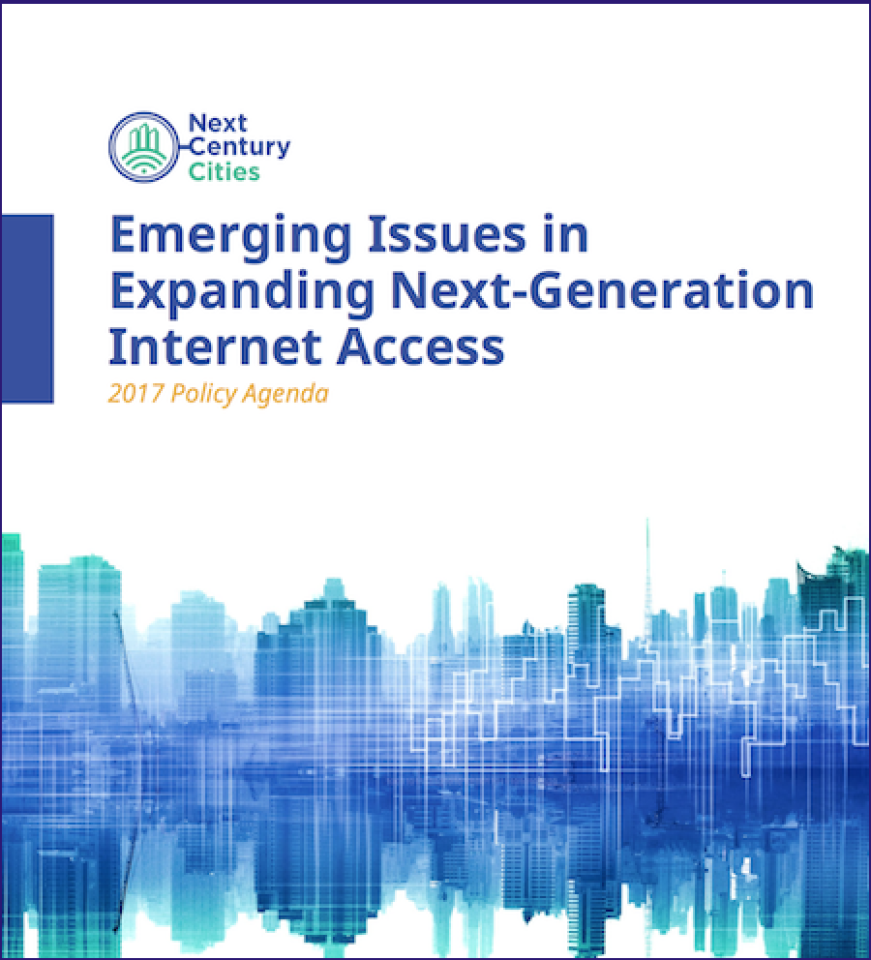
Fast, affordable Internet access for all.

Next Century Cities’ “Emerging Issues in Expanding Next-Generation Internet Access: 2017 Policy Agenda” offers recommendations to local communities that want to improve and expand local connectivity. This policy agenda looks at some of the most recent issues facing cities and examines ways they’ve faced the challenges. Many of the examples in the policy agenda come from communities that are members of Next Century Cities.
In a press release about the policy agenda, Executive Director Deb Socia said:
“Local governments are the key to better Internet access for more Americans. Next Century Cities’ new Policy Agenda helps communities make the best use of the resources available to them, and gives a diverse group of stakeholders the tools to develop needed broadband infrastructure. These policies and recommendations for tackling emerging issues can drive communities’ broadband future nationwide.”
The policy agenda addresses:
In addition to offering recommendations, Next Century Cities provides real-world examples of communities where the policies are in place. The report also offers explanations for decision makers who may be informed about policy but less knowledgeable about technologies that impact policy.
While offering suggestions on specific recommendations, Next Century Cities includes five tenets that elected officials need to consider when pondering any infrastructure investment, including telecommunications:
Any infrastructure investment program should be neutral with regard to business model. Investment should not favor one model, regardless of whether the network will be privately owned, publicly owned, or cooperatively owned. The history of infrastructure investments—water, roads, electricity, gas, etc., includes both public and private investments.
Investment should target both rural and urban areas. Rural areas often lack a single provider of high quality Internet access. Urban areas often have a lack of choice in broadband providers and large populations unable to afford existing options.
Communities must be involved in the process. A program that imposes a solution from afar is far less likely to maximize benefits than one that has local support. Projects with more local support should be prioritized.
Networks must stand the test of time. Taxpayer subsidies should be smart investments in scalable technologies that will meet local needs well into the future. Minnesota’s Border-to-Border Fund requires that subsidies be used on technologies that can scale to 100 Mbps symmetrical. A requirement to be able to offer a gigabit symmetrical is reasonable for the modern era.
Competition is the official policy of the United States, and new investments play a crucial role in competition. Building a financially sustainable network in a rural region may involve also serving a regional hub that already has broadband access.
Download the entire policy agenda here and learn more about Next Century Cities at their website.
